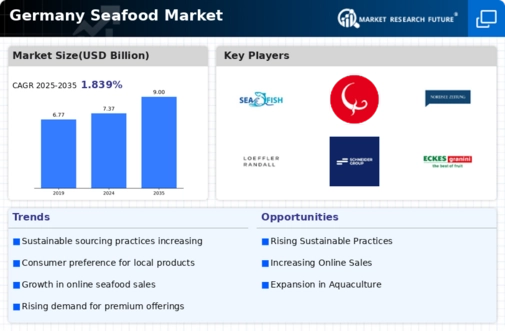Growing Interest in Aquaculture
Aquaculture is emerging as a vital component of the seafood market in Germany, driven by the need to meet rising seafood demand sustainably. As wild fish stocks face pressure from overfishing, aquaculture offers a viable alternative to ensure a steady supply of seafood. The seafood market is witnessing investments in aquaculture technologies, which enhance production efficiency and sustainability. Market data indicates that aquaculture production in Germany has increased by 20% over the past year, reflecting a shift towards more sustainable practices. This growth not only supports local economies but also addresses environmental concerns associated with traditional fishing methods, positioning aquaculture as a key driver in the seafood market.
Innovations in Seafood Processing
Technological advancements in seafood processing are significantly impacting the seafood market in Germany. Innovations such as improved freezing techniques and vacuum packaging enhance product quality and shelf life, making seafood more accessible to consumers. The seafood market is witnessing a shift towards value-added products, with processed seafood items gaining popularity. For instance, ready-to-cook seafood meals have seen a surge in demand, appealing to busy consumers seeking convenience. Market data suggests that the processed seafood segment has grown by 15% in the last year, indicating a strong trend towards convenience and quality. These innovations not only cater to consumer preferences but also help in reducing food waste, thereby aligning with sustainability goals.
Regulatory Changes and Compliance
The seafood market in Germany is influenced by evolving regulatory frameworks aimed at ensuring food safety and sustainability. Recent changes in regulations require seafood companies to adhere to stricter standards regarding sourcing, processing, and labeling. The seafood market is adapting to these changes by investing in compliance measures and quality assurance processes. This shift is reflected in market data, which shows that companies prioritizing compliance have experienced a 12% increase in consumer trust and loyalty. As regulations continue to evolve, businesses that proactively adapt to these requirements are likely to gain a competitive edge in the seafood market, fostering long-term growth and sustainability.
Rising Consumer Demand for Seafood
The seafood market in Germany experiences a notable increase in consumer demand, driven by a growing appreciation for diverse culinary experiences. As consumers become more adventurous, they seek out various seafood options, including exotic fish and shellfish. This trend is reflected in the market data, which indicates that seafood consumption in Germany has risen by approximately 10% over the past year. Additionally, the increasing popularity of seafood restaurants and specialty stores contributes to this demand. The seafood market is adapting by expanding product offerings and enhancing distribution channels to meet consumer preferences. Furthermore, the rise of social media influences food choices, encouraging consumers to explore seafood dishes, thereby further propelling market growth.
Increased Focus on Traceability and Transparency
The seafood market in Germany is increasingly characterized by a demand for traceability and transparency in sourcing practices. Consumers are becoming more conscious of the origins of their food, leading to a preference for sustainably sourced seafood. The seafood market is responding by implementing traceability systems that allow consumers to track the journey of their seafood from ocean to plate. This trend is supported by market data indicating that approximately 60% of consumers are willing to pay a premium for seafood products that are certified as sustainably sourced. As a result, companies are investing in certifications and labeling initiatives to build trust and credibility with consumers, thereby enhancing their market position.



















Leave a Comment